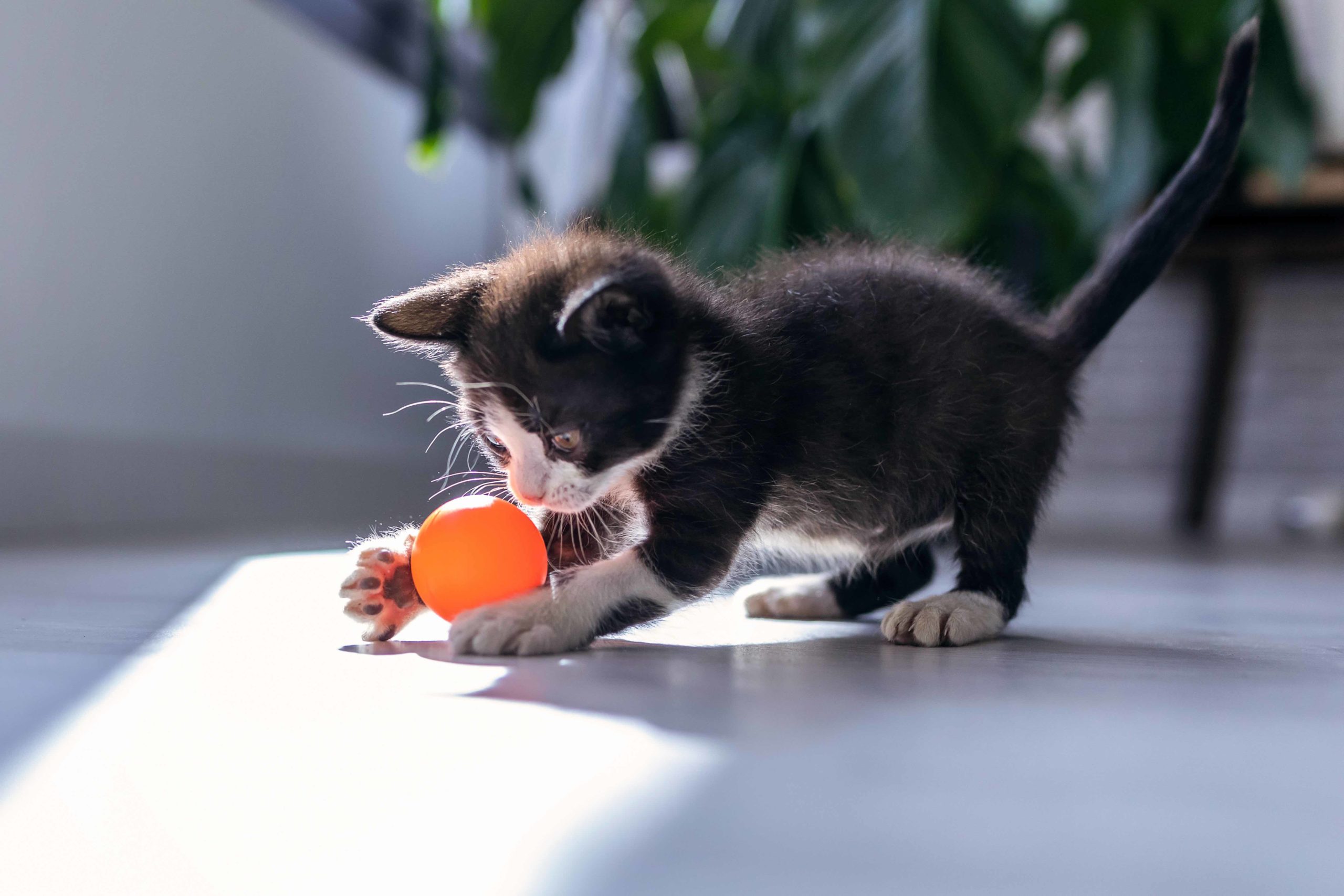Bringing a new kitten home is like bringing home new baby. It’s an exciting time, but there’s a lot to think about. Like any baby, kittens need supervision, regular feeding, and help with things like going to the toilet.
To help make things a bit easier, we’ve put together our top 10 things you need to know and important things to consider to be as prepared as possible for the new addition to your family. This also applies if you have adopted an older cat too.
Remember that your kitten will look to you for reassurance and confidence during the initial stages of your relationship. With a little bit of preparation, this can be the time where you build loyalty and friendship with your new fur baby.


Before you bring your kitten home:
- One or two? Consider what will be better for your family, lifestyle, and your new kitten(s)
- Consider pet insurance* or how you will fund unexpected veterinary expenses for your new kitten.
- Set rules and expectations with children in terms of their behaviour around the kitten, and responsibilities (if any). A kitten is not a toy and needs rest, reassurance, and quiet time.
- Check your house for hazards or things you want to protect from your kitten. This may mean protection on the lounge to prevent scratching or corralling off areas of the home that are off-limits.
- Check your home for toxic plants to cats and remove them from the home.
Your new kitten
We have listed the items you need to get ready for your new kitten:
- Cat carrier
Having a safe and secure way to transport your newest family member is essential. Make sure that the carrier is sturdy, fully enclosed and has room for a waterer for longer trips.
- Bedding
Although in time your kitten may discover his or her own favourite places to snooze (your bed will probably be one of them), providing a couple of bedding options for your new kitten is a great idea. Include one that is enclosed to help give your kitten a space where he or she can feel safe. We recommend something durable and easy to throw in the washing machine.
- A collar
Getting your kitten used to a collar early in life saves a battle of the wills later. Make sure the collar is designed for kittens/cats and has a quick release clip so that the risk of strangulation is reduced. You may also wish to get a harness and lead for your kitten so you can start lead training him or her. Ensure you check the collar weekly as your kitten grows.
- Litter tray(s) and kitty litter
For a small kitten you may need to purchase smaller trays that they can easily access it. As a rule of thumb, you need one tray per cat and one extra tray. That means, if you have one kitten, you need two trays. Place the trays in low traffic areas of the home and show your kitten where they are. Depending on where you obtained your kitten, you might know which kitty litter they are already using, so stick with that initially to prevent any mishaps. Otherwise, going with a biodegradable litter such as one made from recycled paper might be a good option.
- Toys & Scratching posts
Kittens love to play and climb! Investing in some good quality cat toys will mean hours of fun for you and your kitten. Don’t underestimate the fun of a scrunched-up piece of paper or a pen lid. Start your kitten early with scratching poles and trees to climb on.
- Food and water bowls
A water fountain is a great choice for a cat as they love moving water. A heavy ceramic water bowl is another good choice for water as it keeps the water cool and is difficult to tip over. Having more than one water bowl throughout your home will also help ensure your kitten doesn’t run out. Stainless steel food bowls are hygienic and easy to clean, again choose one that your kitten can’t tip over and that has a non-slip base.
- Food
Make sure you ask the shelter or breeder what food your kitten was eating with them and have some of that food on hand initially. Gradually mix in new food if you are changing your kitten’s diet. Kittens also like nibbling on cat grass.
- Vet care & preventative medication – flea, worming and tick control.
Find a reputable, local veterinarian prior to bringing home your kitten to register your information and ask any questions you may have about kitten care, nutrition, health, and training. You could also discuss flea, worming, and tick control with your veterinarian.
- Grooming tools
Depending on the breed of cat, you may not need a lot, however it’s always good to get your kitten used to being gently brushed from a young age
- A cat friendly enclosure
Your new kitten will hopefully be with you for a very long time. Keep them safe by keeping them indoors with access to a cat friendly enclosure. This helps to prevent road accidents, and other traumas like being bitten by snakes and it also helps protect our the wildlife.
Hopefully you are feeling well prepared and ready to welcome your precious new family member(s)! Enjoy this special time bonding with your fur baby
Pet insurance can help by covering a portion of the eligible vet bill if the unexpected happens. Because it is difficult to predict the costs of veterinary care, it can help to have measures in place to help prepare for the unexpected. Check out our partner network and explore our policy tools to find a pet insurance policy.
Not all conditions or items are covered by Pet Insurance. Refer to the applicable Product Disclosure Statement for information about coverage and exclusions.



 Fact checked
Fact checked





